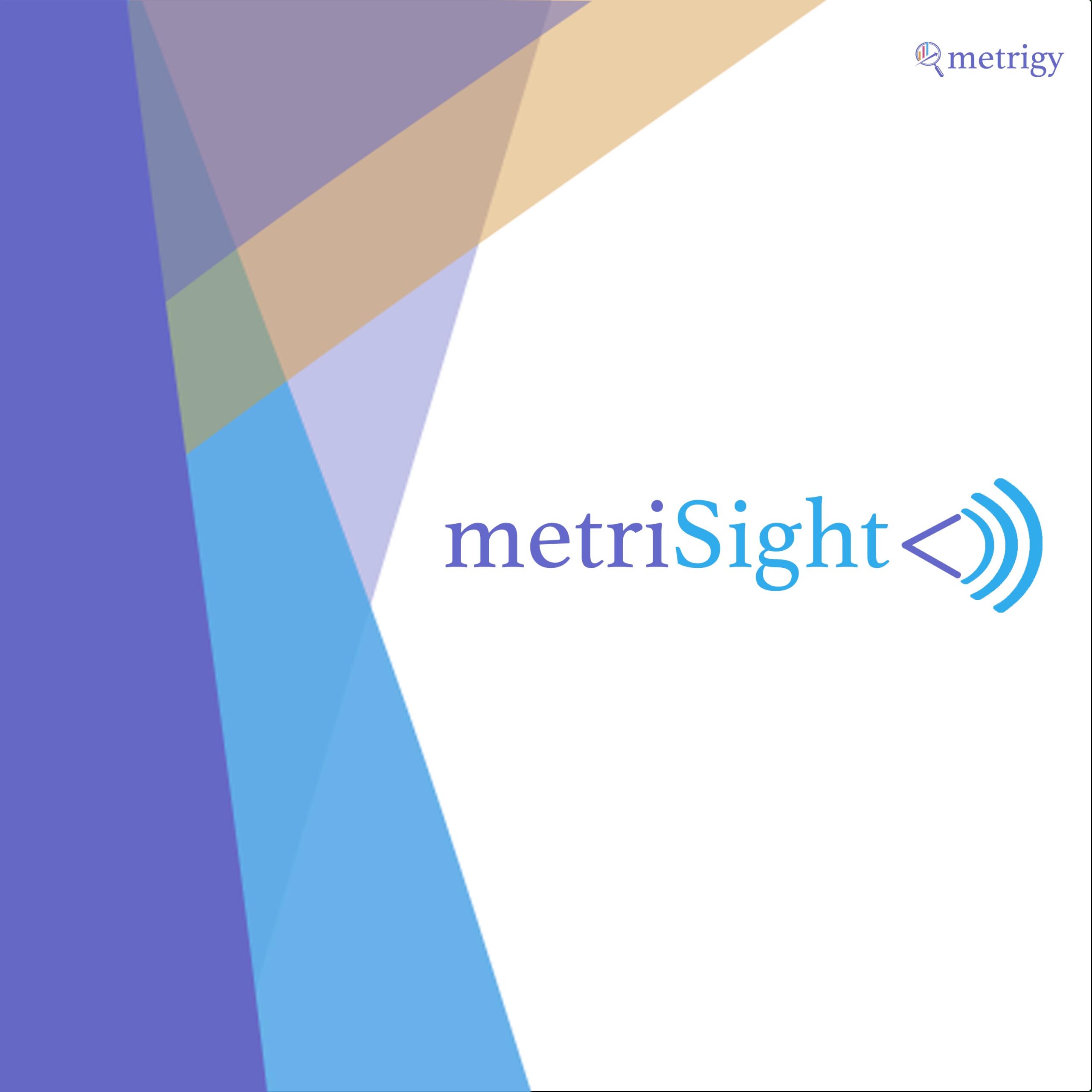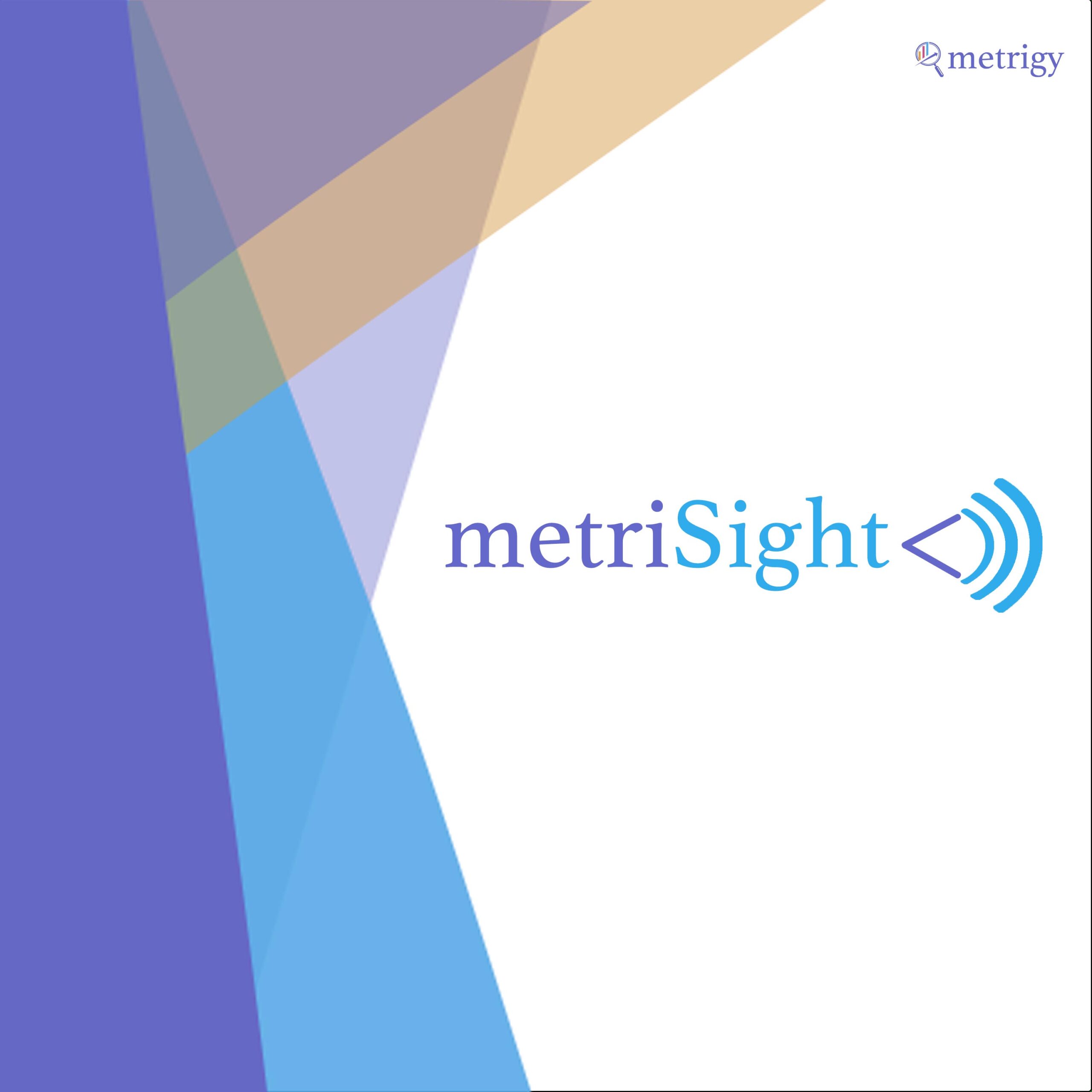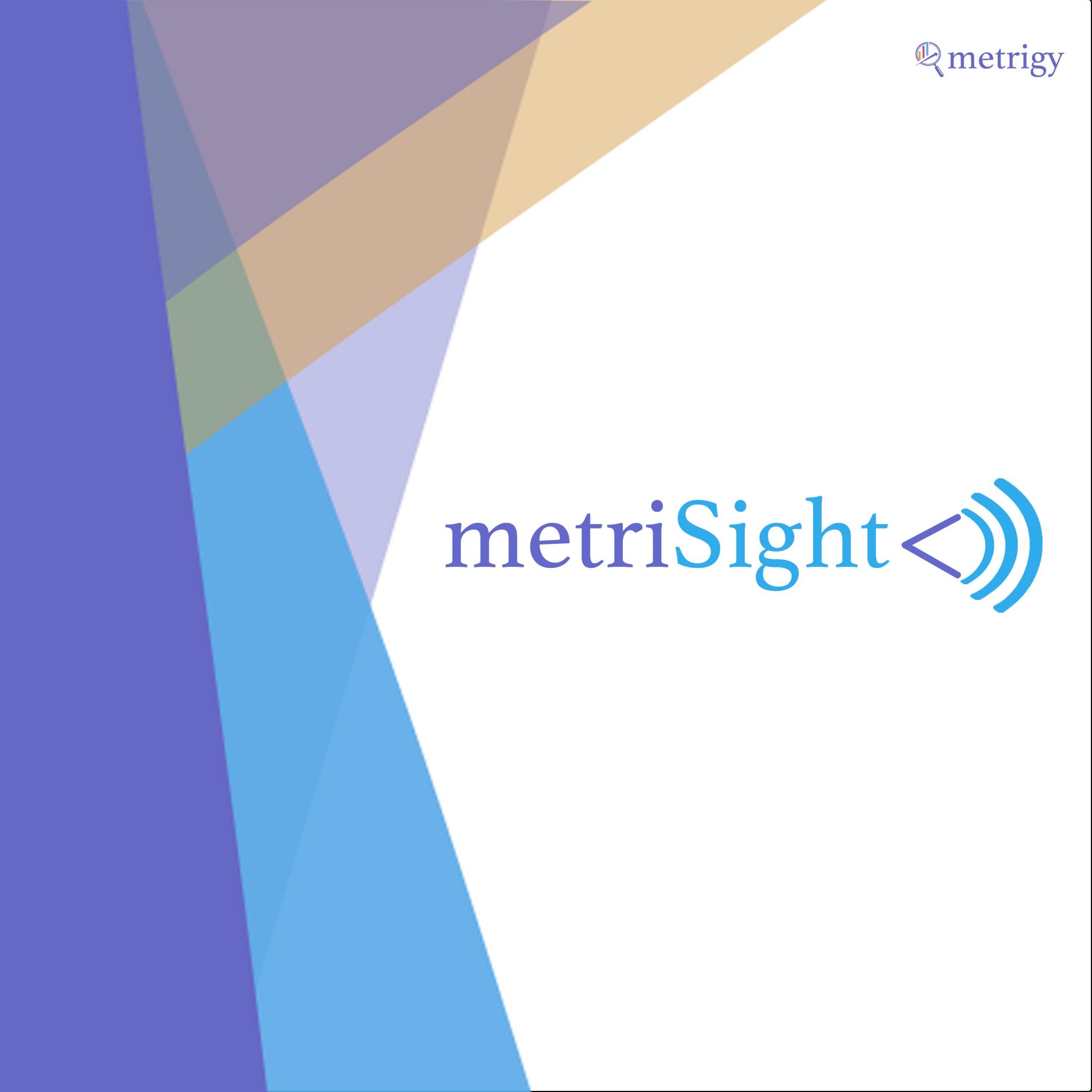[00:00:23] Speaker A: Hello and welcome all. Thanks for tuning in to this episode of Metrosite. I'm Robin Garris. I'm Metro G's CEO and principal analyst. And joining me today is Beth Schultz, our vp of research and principal analyst. And we are actually really excited to talk about one of our latest research studies that Beth has just completed. It's called Advanced API and CPAs development, which is obviously a really hot topic these days, especially with all that we're seeing happening in both the customer and employee engagement spaces. So, Beth, let me just. Hello and welcome.
[00:00:57] Speaker B: Hello, Robin, and welcome everybody.
[00:01:00] Speaker A: And let me just start by asking you a little bit about the study. So give us the basic demographics, things that our listeners might need to know about this study.
[00:01:10] Speaker B: Yeah, I think that's always a good place to start. You want to know what the research group looks like, right? So first off, we conducted the study in the fall. We had 400 enterprise participants. Most were at the management level or above, you know, across different business functions. So we had it represented, we had CX represented.
We also had 15% developers by role.
And then we also looked at, you know, who holds sort of the purchasing power. And so across the base, most either make and orlando influence buying decisions or operate and support the CPaaS solutions. And then 20% identified themselves as also funding CPAs purchase.
All company sizes represented a little bit slightly more on the smaller company size. About 43% were in that smaller bracket, which we consider 250 or fewer employees, 36% of the mid size. So that's a 250 to 2500, and then a little bit over 20% at the large size companies. So 2500. And over across all industries, higher representation in tech, manufacturing, financial services, healthcare.
And this was a global study, as all of ours tend to be. But most for this one were headquartered in the US. But they did have operations, you know, represented in North America, Europe and Asia PaC. And in those, in those areas, really France, Germany and Europe, Australia and India and Asia PAC overall average number of employees was about 7600, with the mean annual revenue of about 2.1 billion.
That's the kind of down and dirty of it.
[00:03:05] Speaker A: That was a good detailed demographic overview for sure.
I want to talk a little bit about just cpaas.
I shouldn't say most people, a lot of people know what CPA's is, but a lot of people don't. And it gets confused a lot with ccaas. And a lot of people look at cpaas and think, oh, those are. That's only for developers, it's not for me. So.
And I also think that the definition of cpaas has and continues to evolve. So what is CPaas from the definition of the study, and why is it so important at this point?
[00:03:39] Speaker B: Okay, so we look at CPAaS in a, you know, kind of, we like to talk about cpaas in a few different ways. You know, primarily the idea is that it allows companies to tailor their communications features by, you know, adding in real time cloud based communications capabilities, you know, that could be to existing business applications, maybe to their websites or communications platforms. So, you know, simple example, you're going to add a click to call to your website or a chatbot to your website. You can do that through APIs. Now, all of that work is done programmatically. And what that means is that it's done via your application program interfaces, your software development kits, all of that, the development, the customization, the integration all through APIs.
Traditionally, that's been the purview of the developers themselves because those were kind of big heavy platforms that required full coding. So we see companies either having to staff up with their developer resources to build these applications or outsource that work to third parties, consultants, systems, integrators, what have you, or the CPaaS provider themselves will offer developers development resources.
But more so lately we've seen CPaaS providers start to offer low and no code solutions. So, yeah, I mean, it lets people build out their workflows, their communications workflows, eliminating all those manual processes and getting the developer out of the, out of the involvement. And that means you can get your functional groups to get involved if CX needs to, if your CX group needs to add a new channel, they don't have to go to developers anymore.
[00:05:40] Speaker A: You do a lot quicker, that's for sure.
[00:05:42] Speaker B: A lot quicker. Absolutely.
[00:05:44] Speaker A: Yeah.
[00:05:46] Speaker B: And then we, you know, in terms of, you know, we talk about why is it so important? Why is it so important?
You know, it allows companies, and I'm going to speak primarily about ccaas rather than going to employee engagement for this one, but it allows them to address their big challenges and to transform themselves. They don't have to invest in big new software package or a big new platform. Gives them tons of flexibility and agility.
If customer ratings are low, you can use a post call survey, send out a text message with post call survey request or ask. The agent can ask if they want to do a post call survey actually within the phone call, and just then send them off to that survey. You can analyze interactions to see what's going wrong.
If you don't have enough proactive reach. Rather just use your messaging APIs to create a text messaging application for sending order status, availability, or whatever alert is needed. There's a ton of flexibility there.
I like to think about what one of our study respondents said. I love this. He called it, or they called it auto magic. That's a term that they use internally to describe their cpas deliverables functions, that they seem like magic, but it's really just automation automaton. Yeah, I love it.
[00:07:15] Speaker A: Complaints about the term cpas that it's like all these acronyms. Why don't we just call it the automagic?
[00:07:20] Speaker B: Right, right, exactly.
[00:07:22] Speaker A: So I know you've kind of touched on this already, but can you go into a little bit more detail on how companies are actually using cpas? What are some of the things that they're doing? And in the research, which ones, you know, which things were they doing most or least, or what did you find?
[00:07:36] Speaker B: Well, you know, as you mentioned, you can use cpaas for both CX, CX improvements, employee engagement improvements, and also first network connectivity and capabilities.
But we did find that adding new customer engagement channels is the top reason about a little bit more than half of folks.
That was the starting point for cpas. For them, yeah, for sure.
[00:08:07] Speaker A: The starting point for cpas was always like SMS messages or appointment confirmations and things like that. So I think that that might be shifting a little bit.
[00:08:16] Speaker B: Right.
[00:08:16] Speaker A: I mean, now we're seeing people using cpas to add new, new channels. So, like, whatever it might be, SMS or, you know, any other web chat or any other channel.
[00:08:25] Speaker B: Yeah, yeah, that was the top, the top use case. I mean, you know, quite another, quite a number of other CX use cases kind of bubbled up to the top two in terms of starting points.
You know, that workflow automation is a big one, of course, introducing AI and analytics, that's one of the more advanced use cases.
You know, if you've got an on premises contact center system still, and there are quite a lot of those out there, you can use cpaas to layer in some cloud based features and functionality, you know, without having to migrate entirely to the cloud. So that's a good starting point for some.
And then self service itself is becoming, you know, highly desirable, and adding in a virtual assistance for that self serve, you know, to guide customers through the self service process is also, is also one of the top starting points these days.
And then we looked at, well, what are they doing with this stuff? So they're kind of everybody's doing a little bit of everything or a lot of everything.
They're building out applications and they're building out workflows and they're brand new stuff. And then they're also using cpaas to augment their existing applications and augment existing workflows.
[00:09:43] Speaker A: Okay.
All right, so how would you say this growth looks?
How does this growth look? I guess on an API basis.
[00:09:57] Speaker B: So overall, just generally we see from onset and we looked at starting at about 2000, 920, ten, that's sort of the Twilio days. You had some messaging APIs and voice APIs starting to come in there. So depending whenever they started their onset, about 84%. So a good chunk of folks have increased their use of cpas over time. Right.
[00:10:29] Speaker A: Cpas overall. Okay.
[00:10:31] Speaker B: Overall, right. And a quarter dramatically. So in 2022 we saw a 77% saying that they had increased their use of cpas. And then that kind of breaks out, small increases and dramatic increases. And then for 23 we see slightly higher. So about 79% plan on continuing that growth. Now, in terms of the types of APIs they're using and the growth they're seeing. So we see for this, we asked for those that are growing their use of APIs. We asked, okay, so are using same APIs for this for new use cases, same ipas for the same use case, or new types of APIs altogether, what we found was that about 50% are using the same APIs for new use cases. So if you're going to be using messaging API, maybe you started because you needed to send out appointment reminders and now you're going to be using it to ask for post survey interactions or something like that. A simple example. But 40% use the same APIs for the same use cases and then 11% are using new types of APIs. So they're expanding their portfolio of APIs. And that is actually where we see a success correlation. Even though there's a smaller number of people doing that, that's where you can meet with success.
[00:12:01] Speaker A: Like our research success group is doing that at a higher rate than the non success group.
[00:12:05] Speaker B: Yes, I think it's about maybe 14% of the success group is using new types of APIs versus, I think, explain.
[00:12:16] Speaker A: The research success group just so our viewers and listeners know what that is.
[00:12:20] Speaker B: Okay, so our research success group, we looked at four business metrics. We looked at revenue, operational costs, yes. Customer rating to deploy efficiency.
We ask, our respondents say, okay, first of all, do you measure, and if you measure, have your metrics increased, decreased or stayed the same? And then we take a look at that and we calculate companies that have, are above the norm, above the mean on two or more of those we put into our success group. Okay, so I think for this study, we had about 48 companies in the success group, and then we run all.
So then we just run success correlations on, you know, a bunch of different stuff. So.
[00:13:11] Speaker A: Okay, so now that you've explained the success group, can you tell us more about what these successful companies are actually doing with CPS? Because I think that's a really important, important point for any enterprise, business, it or CX leader to look at.
In our research, we always can document what companies are successful with hard business metrics. Okay? These are the ones who are using this technology, and they're seeing increases in revenue, they're seeing improvements in customer ratings and reduced costs and better productivity and all that. So me as a CX leader, I want to imitate that. I want to do what they're doing or even do better. So what kind of guideline or guidance can you give people right now as to what successful companies are doing?
[00:13:54] Speaker B: Oh boy, there's so many.
Let me just kind of hit on a few here. So the one thing we see them is they're very open and kind of flexible. And I guess that's sort of, kind of the mindset that you take when you're going to be embracing the idea of using programmability. Right. But they're not rigid in terms how, in terms of how they think about they're going to get to those APIs. They'll buy them as pre packaged as part of pre package solutions. They'll buy them one off if they just have a one off use case they want address. Or they'll buy them individually and then piece them together to build out an application or a use case.
So, you know, consuming APIs in the best way that suits your needs is a characteristic of a successful company. Another one is they're using more than one CPaas provider, and whether that's to support the same use cases or different use cases, and they do so for a variety of reasons, quality performance management being one of the top reasons, but, you know, optimizing costs, et cetera.
Another thing they do is they integrate CCAs. You mentioned this, Robin, sort of the blurring lines between CCaas and CPAas as well as UCaAs. So they do integrate CPAas with their other communications platforms, UCAs and CCAas in particular. And they use full code as primary platform. I mean, you know, they're still, many are still going that route. They're complementing or supplementing with low code, no code. But the successful companies are using full code. And then one last, one last success. Notice that it centrally manages and controls API use at the successful company. So that's something to keep in mind. There's a lot of.
You can have a lot of stuff floating around out there.
It's good to have that oversight.
[00:15:50] Speaker A: You know, it's interesting, full code two being the primary platform, I guess that aligns somewhat well with the fact that you see a lot of larger companies using cpaas so that they have that, you know, sort of development team to take advantage of full code. But they also are using the no code, low code, too. They're kind of using a mix. Or is it just the success group is just.
I just understand. It's like the success group is just.
[00:16:13] Speaker B: Really using that full quote is their primary platform.
[00:16:19] Speaker A: Okay. All right, well, we are running out of time for this episode, so if people want more information on the study, it's very detailed. There's a lot of information packed in here. I've had the chance to take a look at it. It's really impressive. Clients obviously can access the report on our website or get a custom briefing from Beth where you can help her with all kinds of questions. And I'm sure she'll have all the answers and, you know, get your own custom data cuts. Use that information for, you know, to have Beth do some thought leadership, whether it's webinars or papers or blogs or things like that. If you're not a client and want more information, we'd love to talk to you. You can reach out to
[email protected] or go to our website and up on the top, right, you'll see a link that says, become a client of. Just click that and fill out a form. We don't do any sort of high pressure sales, but just, we'll just let you know what we do and how we can help and if there's a match, wonderful, you know, so by all means, just let us know if you want more information in this really interesting area. So we do have a lot of other research coming out very soon. I have just myself wrapped up a research study on customer insights and analytics. So looking at how companies are gathering information from their customers, how they're using that to help improve their business metrics. A lot of really good stuff there. And Erwin Lazar will be coming out with the Workplace Collaboration research study. I think the week after next that will be out. We have our CX metricast, which is our market forecast and brand new market ranking that Diane Myers is going to be doing. She's, for those of you who know her and didn't know, she joined the company back in October. And she's running the Metrocast program, which she is, you know, got tons of experience at doing so. We've got a lot coming up and a lot more after that. But those are the things that will be happening here over the next month or month and a half. So lots going on here at Metrogy.
So with that, Beth, thank you very much for all of the overview on the CPAAs and API study, and for all our listeners and viewers. Thank you very much. And I hope everyone has a great day.
[00:18:30] Speaker B: Thank you, Robin. Goodbye, everybody.


